MERCH RE-CATEGORY
MERCH RE-CATEGORY
HELPING PATIENTS MANAGE CHRONIC PAIN
MERCH RE-CATEGORY
How i helped mula recategorise their product offering for B2B merchandising
Client: gomula.com
My Role: User experience, User research
Platforms: Web
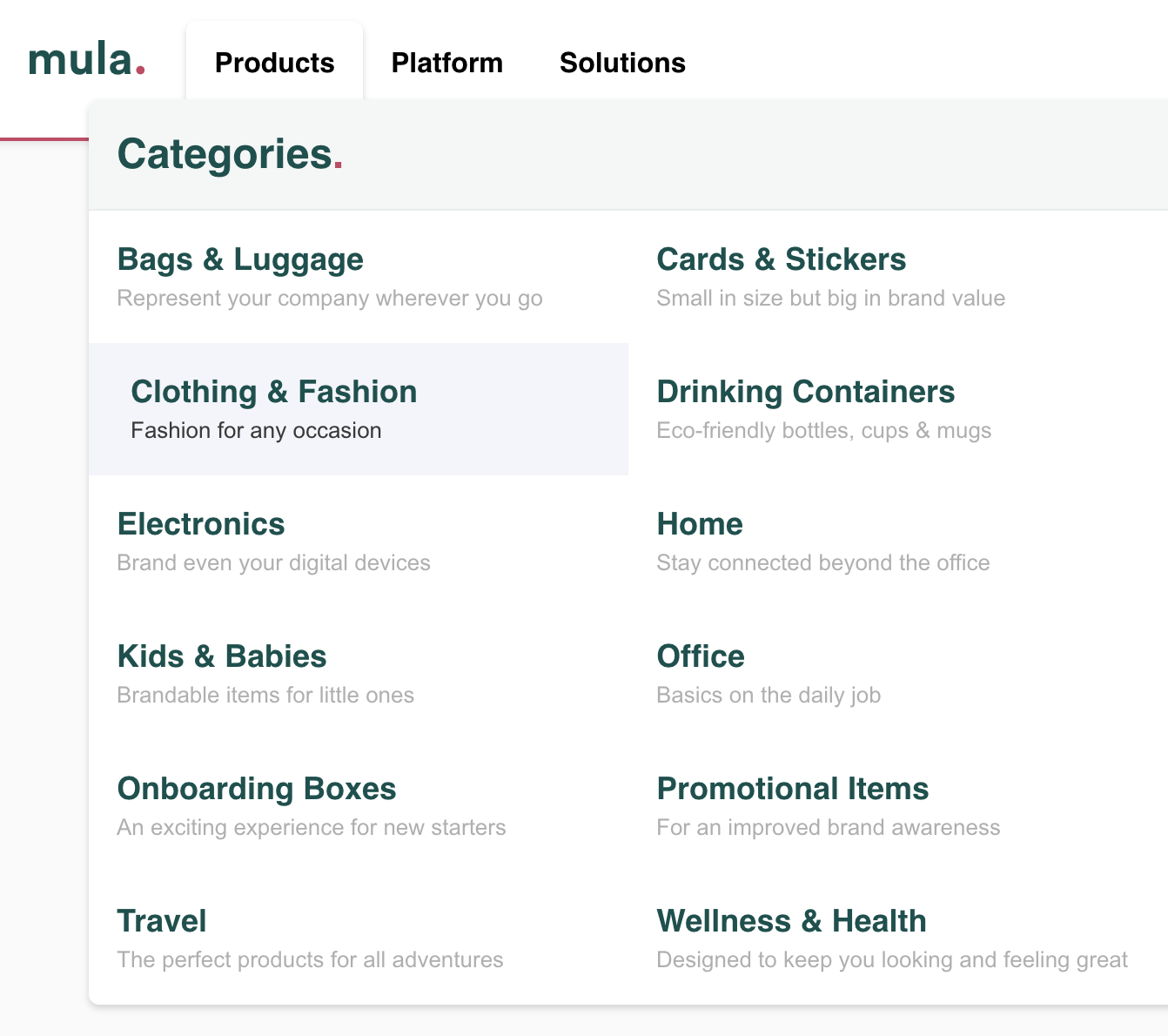
Long story short
I worked with mula to redesign their product catalog category tree that would allow the user to find their desired product faster and easier. on top of that i worked with the sourcing team to create a system to categorise future products easier
But really, what did I do?
Card sorting research to identify initial issues, competitor analysis to scope trends and benchmarks, tree testing to prove the solution and a decision making workflow for the sourcing team
Outcome
The project was fully implemented and is currently live with a growing user base.
WHAT'S MULA?
Mula enables companies to create fully customized merchandise, from design, inventory management, to warehousing and order.
Mula’s main users are HR teams picking merch for onboarding, events, and other employee needs.
Unlike regular e-commerce, Mula is built for B2B. It gives HR teams one place to design, manage, and store branded merch at scale — no juggling vendors or warehouses.
THE CHALLENGE
Mula's product catalog was becoming increasingly large and complex. At this stage of growth, the team needed to rethink how products were categorized to give users better access and a clearer overview of available merchandise.
Up until then, categorization had been handled sporadically by the sourcing team and the marketing team, resulting in an inconsistent and messy catalog.
Additionally, with the catalog expanding rapidly, they needed a scalable system for categorizing new products efficiently.
The process
Test what is the best mental model to categorize our current inventory
- Establish a hypothetical mental model that could work
- Desk research on our competitors and similar products for benchmarks we could adhere to for consistent usability across the web
- Test the mental model in a qualitative form
- Create a logic for a categorization system based on the outcome mental model
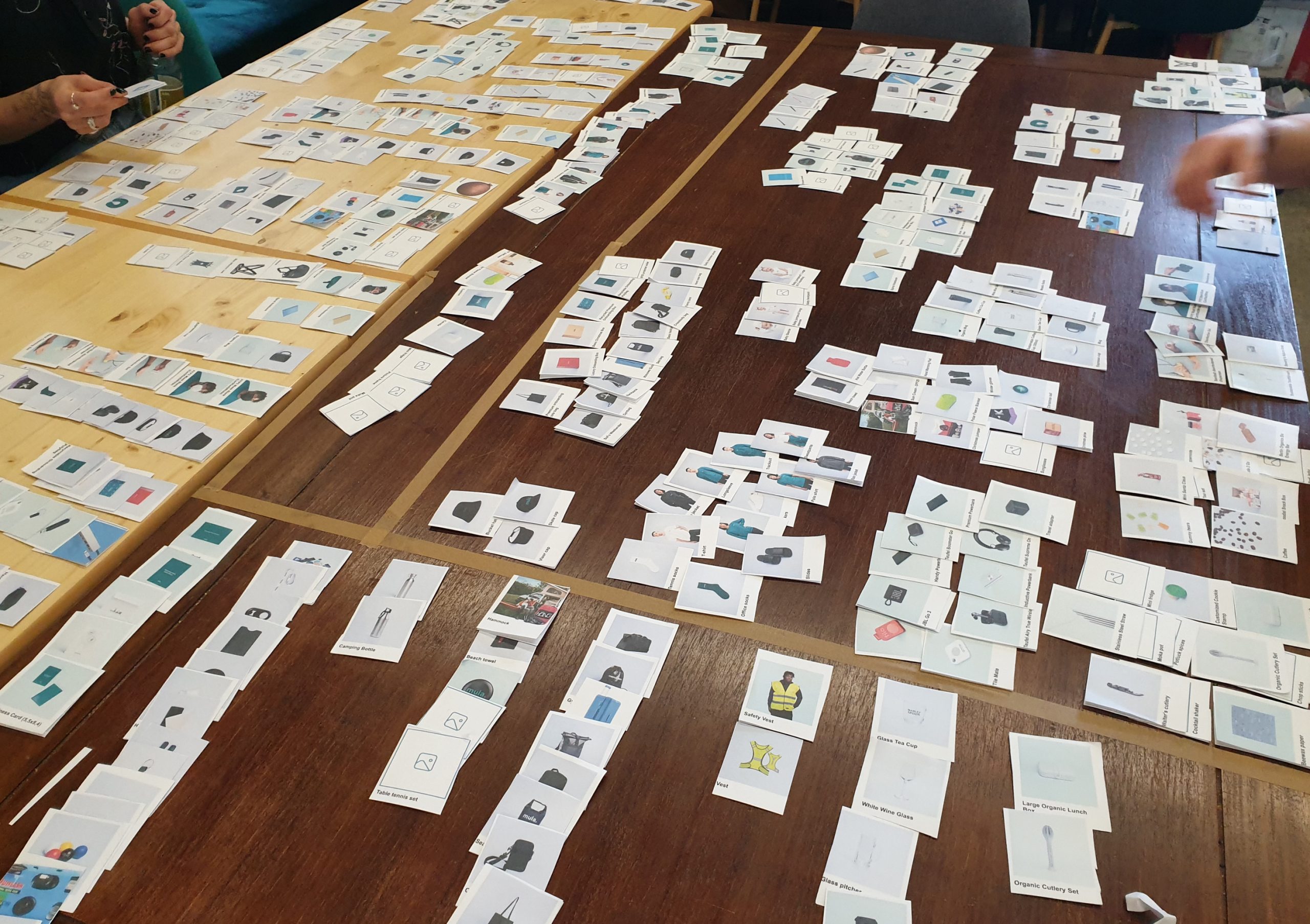
THESE CARDS NEED SORTING
Identify early issues and mental models
I took six users on a journey to categorize all our 200+ products in the categories of their choice. This helped me uncover initial mental models that users could have regarding wayfinding through the catalog
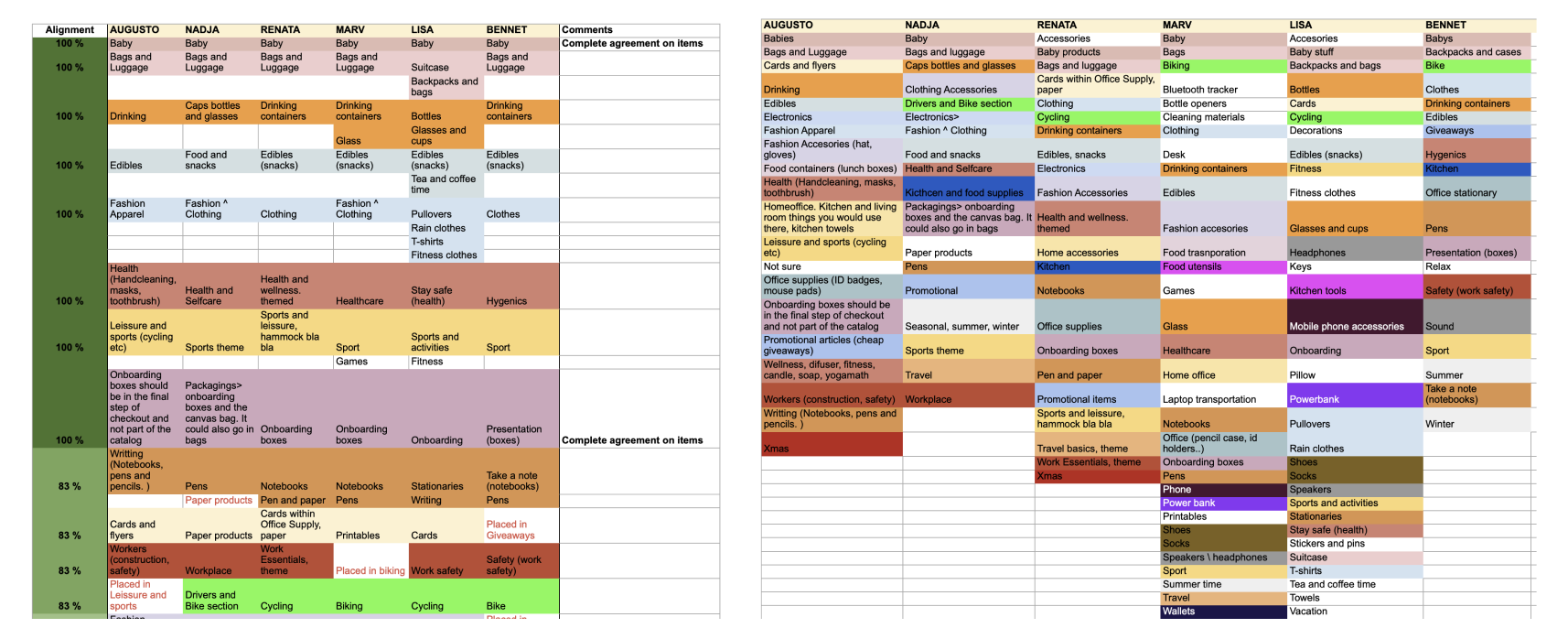
I documented and analysed the categorisation each user made
- This was an intensive process, but doing an offline card sorting really helped the users to deep dive into the large number of products
- The deep analysis helps surface some recurring issues and mind models for product grouping
- Color coding was used to help identify patterns
After doing the synthesis, here are some insights and findings:
- We discovered that several mental models might apply to our catalog.
- Naming conventions that non-native speakers might assign to categories could be essentially incorrect
- Since there are a lot of random products in our catalog that are hard to categorize, we need a system
- Some benchmarks already appeared in the categorization of the testers, and that confirmed my suspicion that there are some obvious benchmarks for most of our products.
COMPETITOR MAPING
In the search for benchmarks, i analysed our main competitors for similar patterns.
This helped me understand where users might expect similar mental models in their product wayfinding
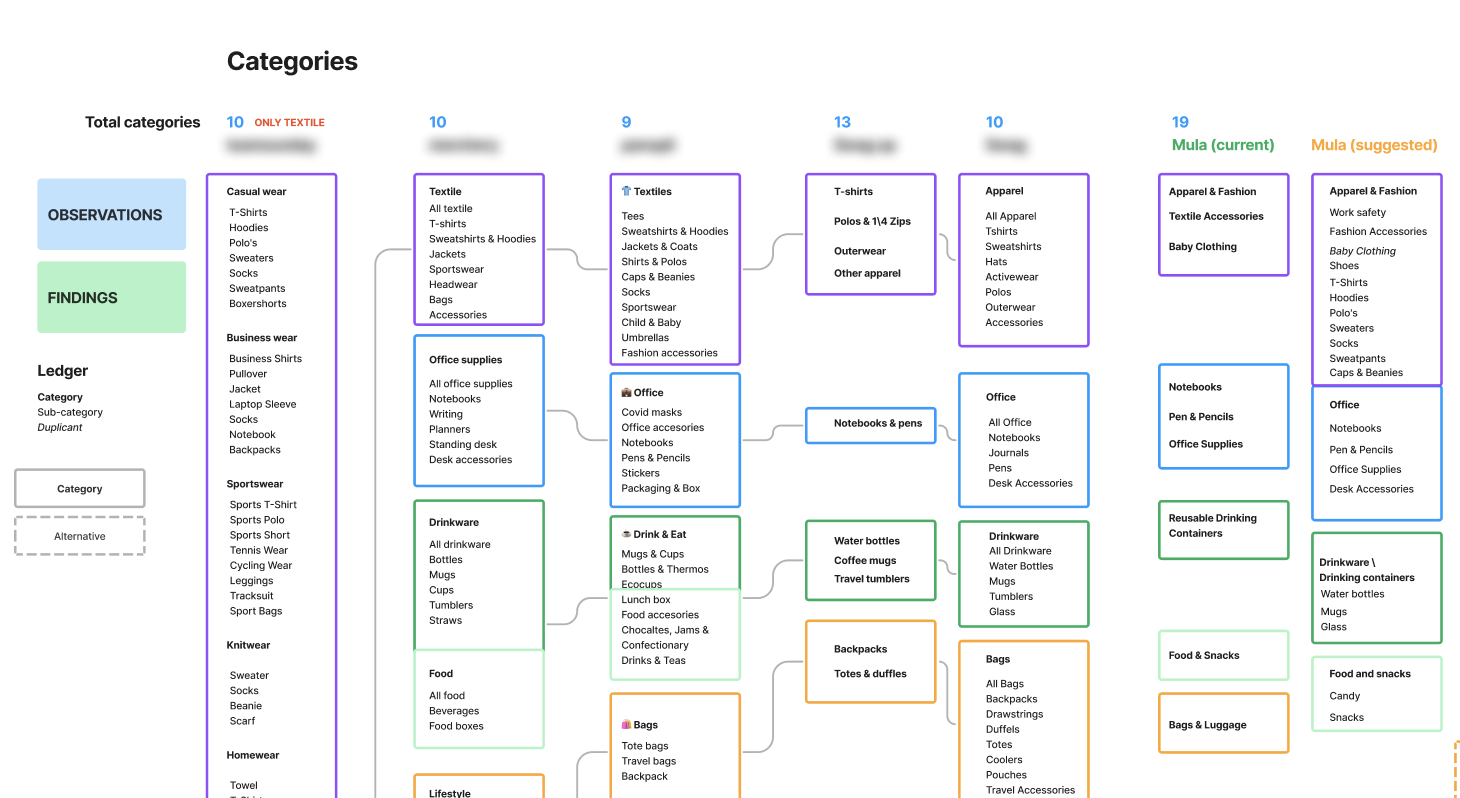
Here are some learnings:
- There is a unified categorization for office supplies, apparel & textiles, things for the home, wellness, sanitary, and bags and luggage.
- All of these and more have an almost unified benchmark within our competitors.
- While looking at other e-commerce websites, these patterns also emerge from time to time and seem to make a lot of sense in the logic that they follow
- The average number of categories our competitors have is 9, i deduce this is connected to the navigation elements structure and trying to abide by Miller’s Law (user can’t remember 7+\-2 items)
DON'T SKIP THE STAKEHOLDERS
I ran an interview with Augusto (sourcing) and Andra (copy) to understand how the sourcing team catalogs items, what their decision-making and workflow are like, and where they have issues currently.
Based on this interview, i understood the team organizes new products based on existing categories and customer demand, with sourcing responsible for planning their placement. They aim to eliminate the catch-all ‘Other’ category by keeping the catalog structured and category-driven. While there’s no strict plan for category growth, the catalog is expected to expand to around 300 items this year.
CREATING THE SYSTEM
Based on this research i created the first categorisation system, taking into consideration the card sorting, input and benchmarks.
The initial configuration concepts are based on a combination of:
- FUNCTION (what does this product do, or what is it)
- LOCATION (where is this product used or placed)
I provided a detailed documentation of each category and why it was chosen, for example:

Office:
● The office category follows the logic of location - examples:
- Where do I find notebooks?
- Where do I find writing utensils?
- Where do I find desk accessories, etc?
TESTING THE SYSTEM
Why tree testing?
Tree testing gives us a good indication on a quantitative side of how feasible our solution might be. The users are given tasks, and based on these tasks, we know how successful the logic is.
The setup
- I used Maze (a remote testing tool) to recruit and run the test.
- I ran 4 moderated tests before the unmoderated test
- Overall, we had a sample size of 41 users (not including the moderated tests)
- The general notion was to test the more conceptual categories (home and office) and some more odd products; however, i also included some top-selling items that are a bit more challenging to place right.
Synthesis
Synthesis was done by the Nileson Norman guidelines
- Success rate: The percentage of users who found the right category for that task
- Directness: The percentage of users who went to the right category immediately, without backtracking or trying any other categories
- First click: the category most people selected first
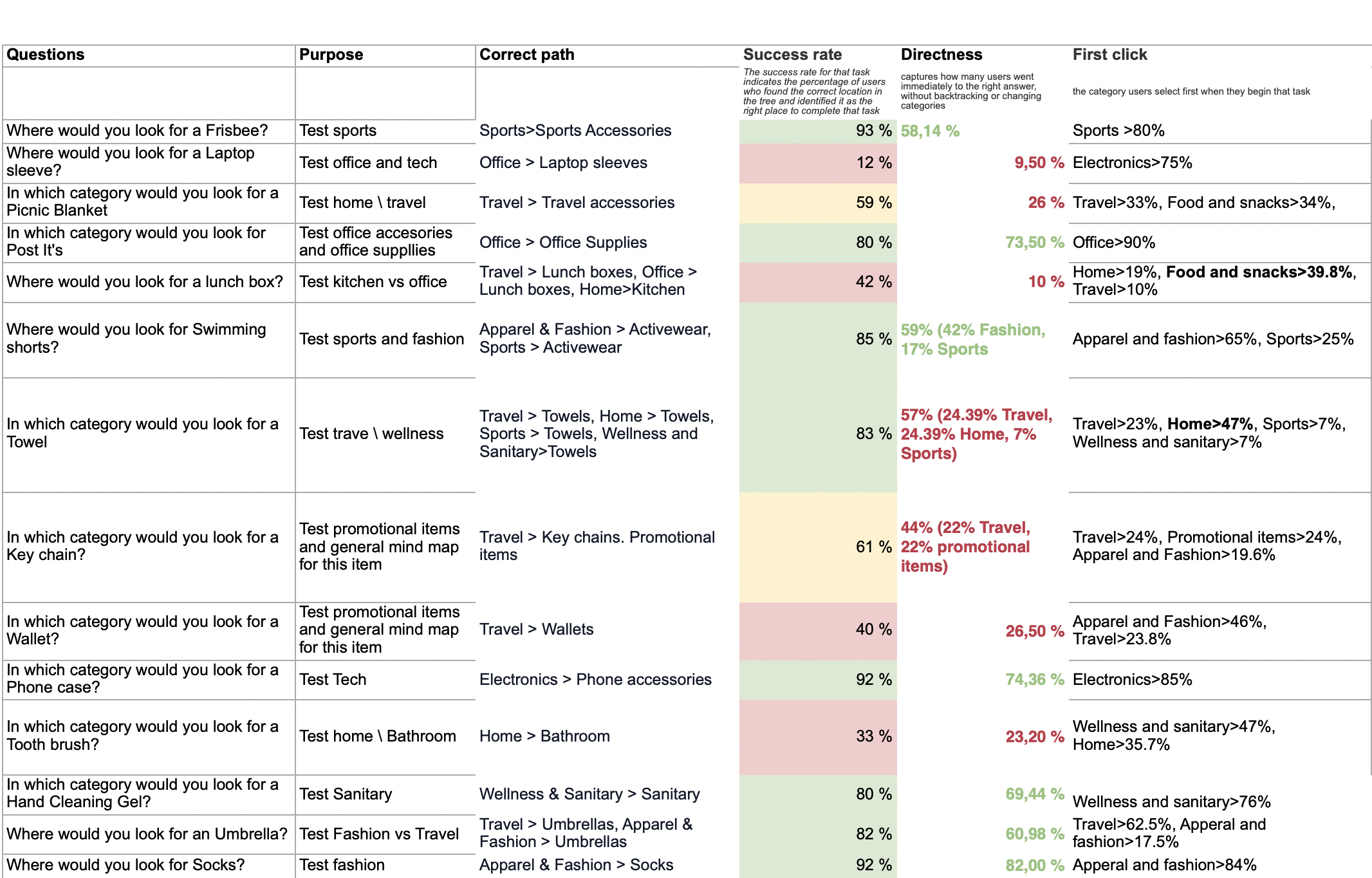
The result
Overall, 7 out of 15 items passed the test very successfully (75% or more of users agreed on this categorization
Only one item was severely misplaced (Laptop sleeves)
- Some categories should be in several categories simultaneously
Tree test results tend to project upwards (60% success rate can mean 90% in a full pledge prototype test), this means the test went relatively very well.
HOW TO SCALE
HOW TO SCALE
HOW TO SCALE
Following the tree test, I iterated on the categorization according to the results and based on the adjusted logic to create the decision-making process to help the sourcing team place new items in the right categories in the future.
The sourcing team was introduced to the following flow:
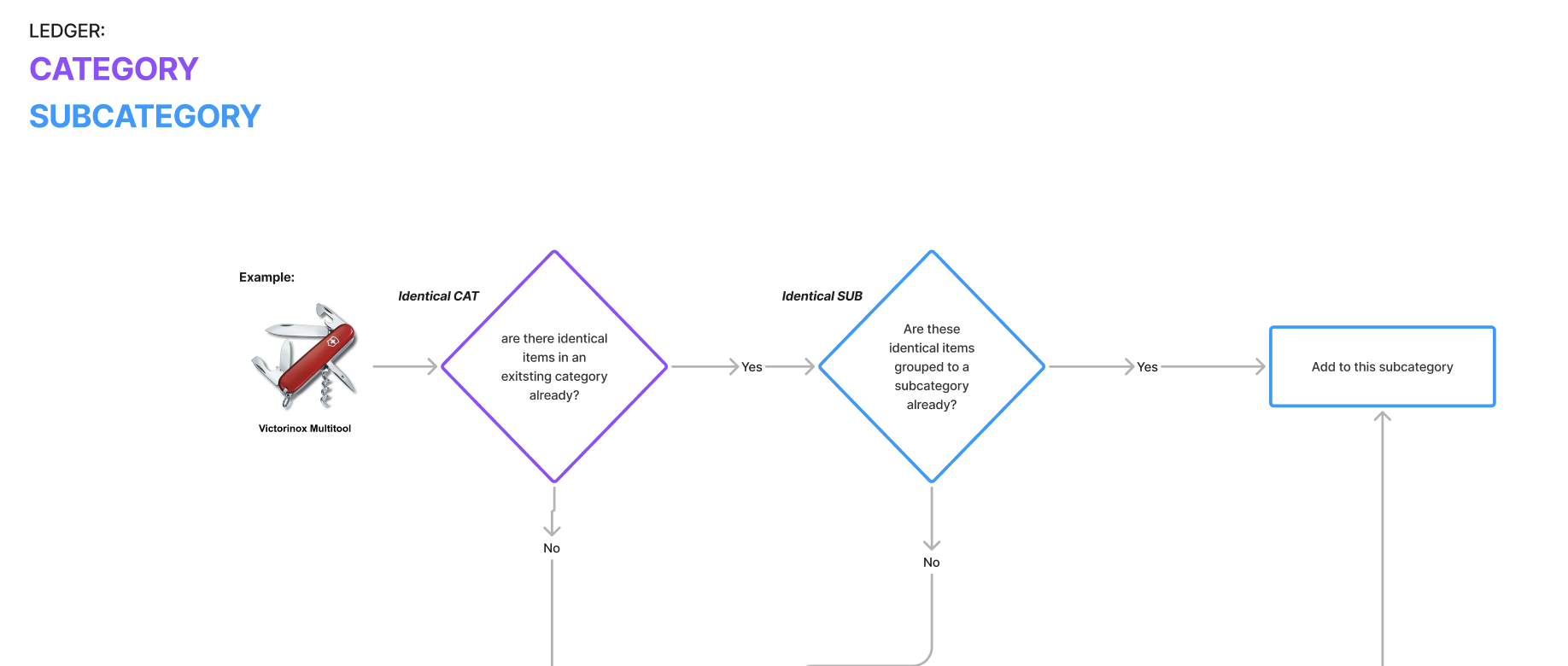
The logic is based on a golden path, which is referred to as “Identical” in the flow.
>T-shirt goes to fashion and then short sleeves
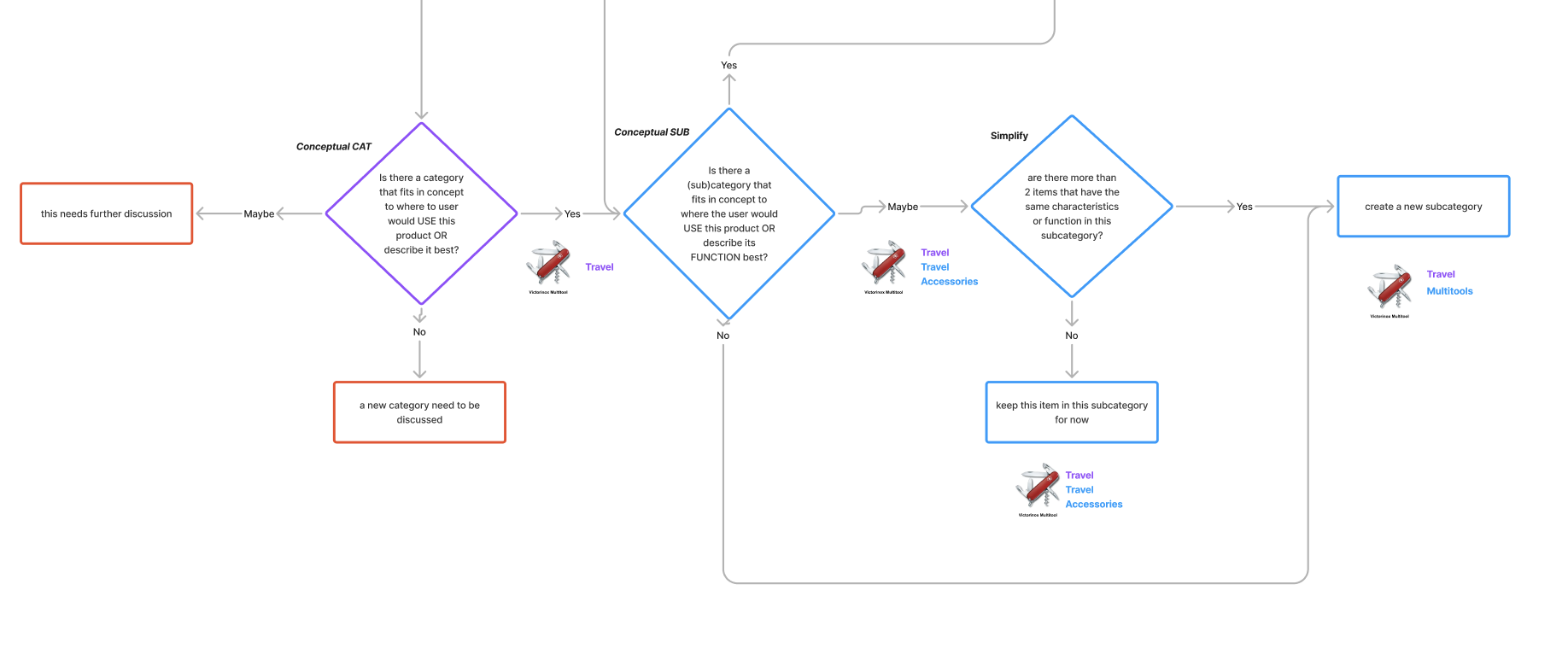
If a product doesn't fit the golden path, it will need to be evaluated to go through a “conceptual” path
>A multitool might belong to travel in concept (it’s used for camping and traveling), and it can be subcategorized as a travel accessory
A NOTE ON FILTERS
A NOTE ON FILTERS
A NOTE ON FILTERS
As part of this project, i also researched, defined, and documented a suggested filtration system for the catalog.
The majority of work was done around identifying unique filters that B2B users might need:
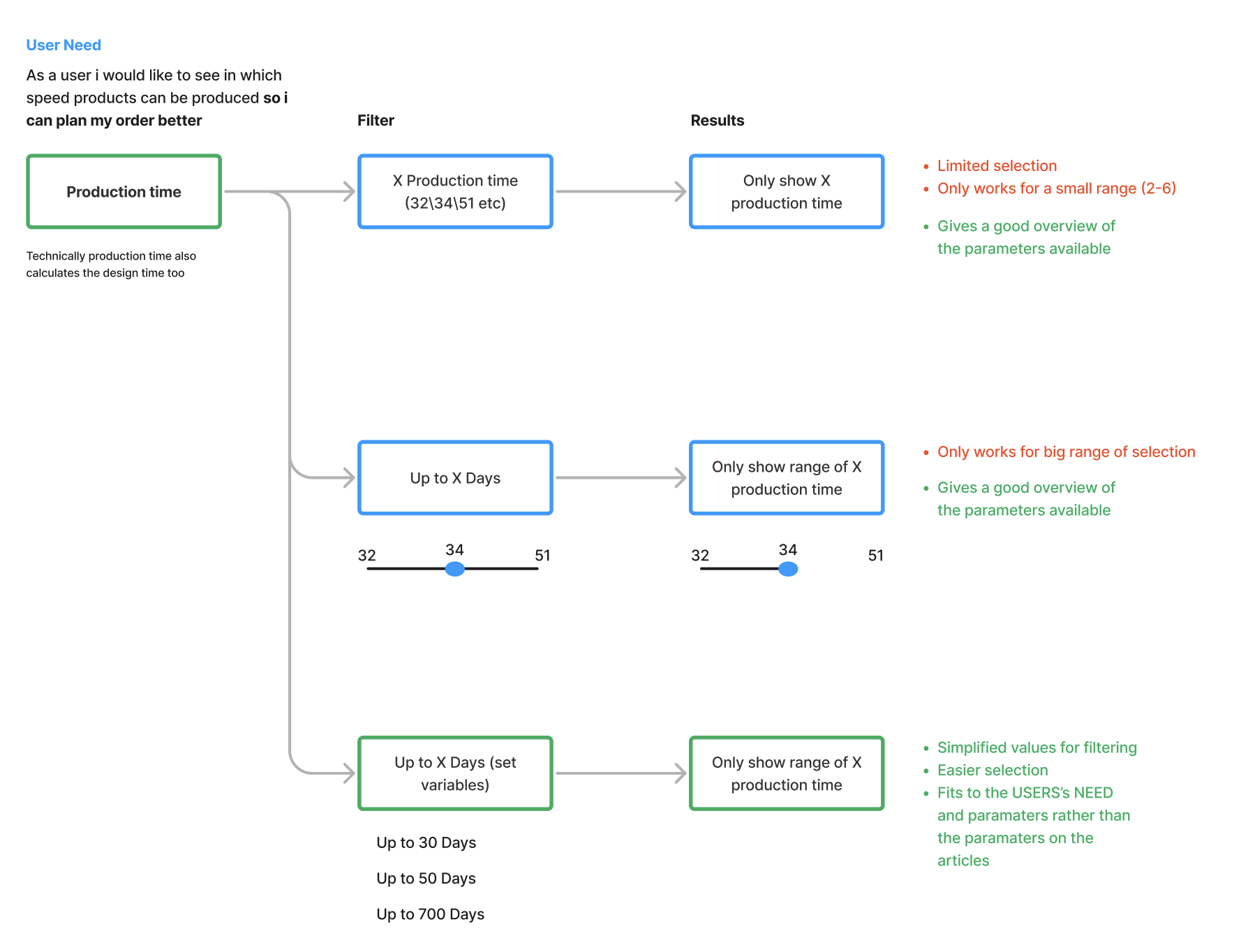
WHAT DID I LEARN?
WHAT DID I LEARN?
WHAT DID I LEARN?
The main learning was the intricacies of card sorting and how sometimes surprising it is what users choose for categories, how culture and language affect these expectations and decisions, and how complicated these systems can get, even when, as a user, it appears that a catalog is very low effort to make, there is a lot of thought behind it.
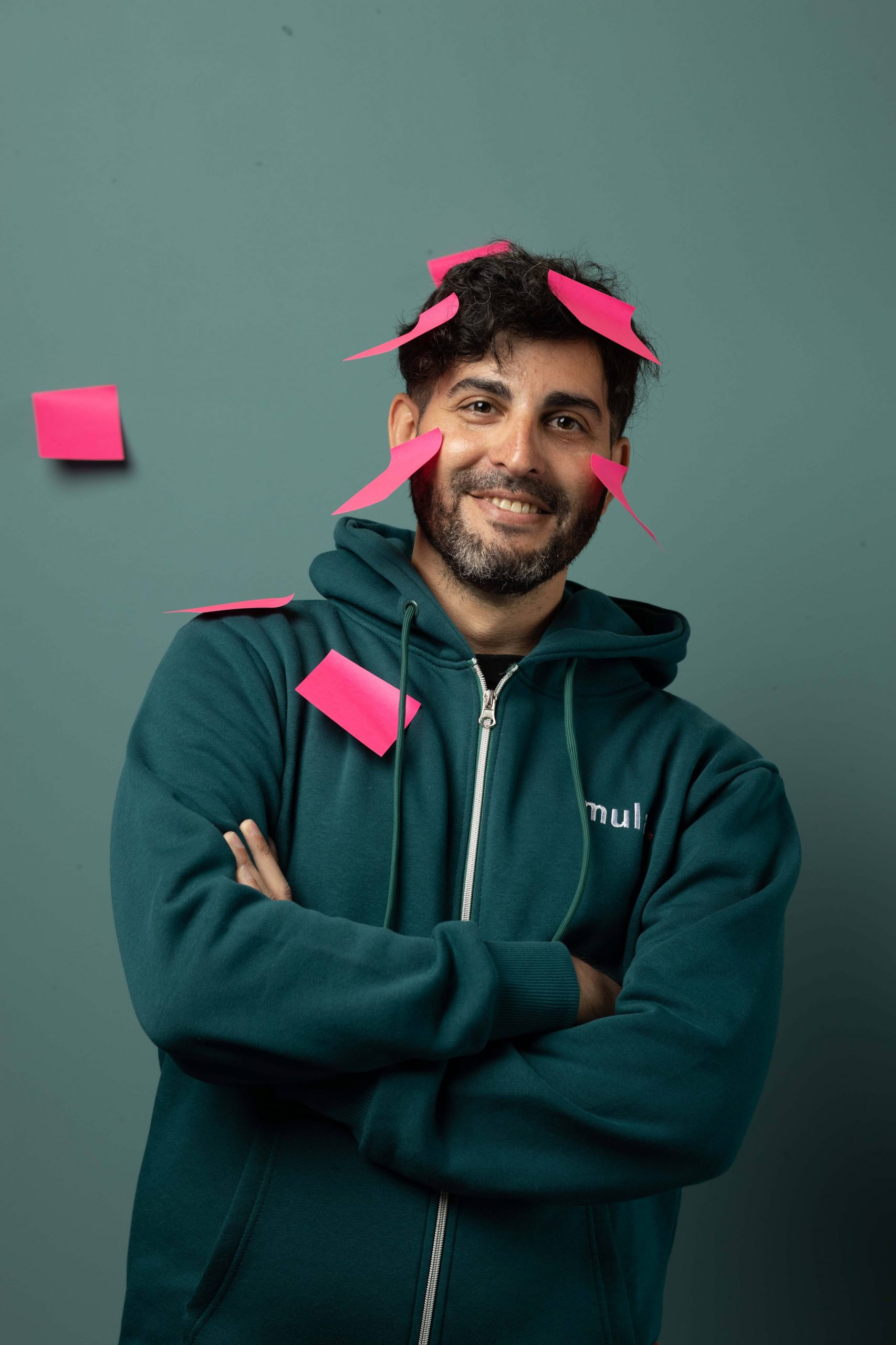
It was a blast!
I also loved working with the Mula team and cooperating with different roles and stakeholders in a very fast-growing startup environment
This is a footer, why are you all the way down here? go back up!
© Idan Nesher, 2023